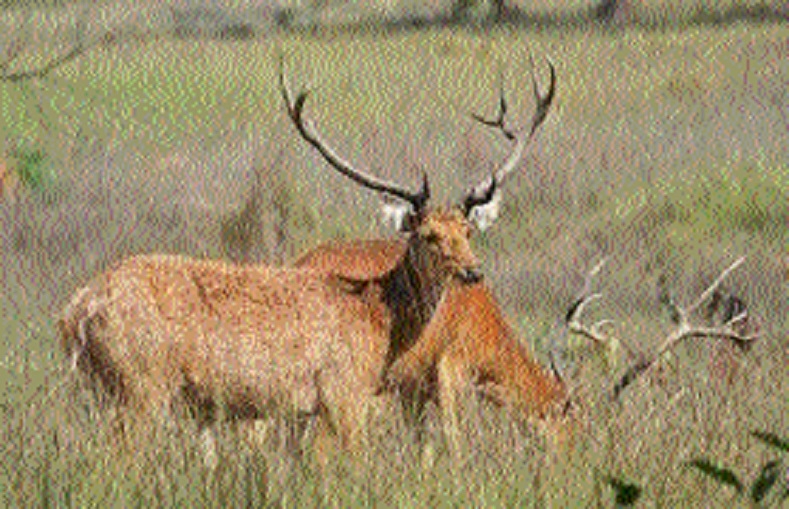MP sets a benchmark in Barasingha conservation
| Date :02-Mar-2020 |

Staff Reporter :
Successful relocation of Barasinghas to Kanha Tiger Reserve is considered as one of the most remarkable achievements of wildlife conservation in the world
RELOCATION of Barasingha to Kanha Tiger Reserve is acknowledged as one of the remarkable achievements of wildlife conservation in the world. The number of hard ground Barasingha had come down to just 66 in Kanha. Today, the number has increased to around 800 due to efforts of the management. This species is included in some of the world’s most endangered wildlife species, owing to poaching and destruction of habitats. India had witnessed a very alarming change in population of Barasingha in 20th century.
During this time farming was being done in the valleys of Narmada, Mahanadi, Godavari and tributaries. Groups of Barasinghas were disintegrated due to biological pressure and they became quite isolated due to fear of commercial and traditional poachers. Due to this, their number kept decreasing rapidly. In the survey conducted by the Forest Department in 1938, there were about 3,000 Barasinghas in and around Kanha National Park. After this, the number of Barasinghas continued to decline and in assessment made in 1953 this number declined to 551 and in 1970 it was just 66.
This State animal of Madhya Pradesh is now somewhat safe, but Kanha management is not considering this enough, and is constantly moving ahead to achieve management objectives of Barasingha conservation. With an aim to increase hard ground Barasingha population, left only in the world in Kanha Tiger Reserve, 7 Barsinghas to Van Vihar National Park, Bhopal and 46 to Satpura Tiger Reserve have been relocated in recent years and increase in their population has been recorded at these places. A total of three sub-species of Barasingha are found in India and Nepal in the world.
In India, three sub-species Rucervus Duvaucelii, Rucervus Duvaucelii Ranjitasinhi and Rucervus Duvaucelli Brendari are found in Dudhwa and Kaziranga National Parks, Manaas National Park and Kanha National Park respectively. Habitat of Barasinghas found in Kanha is hard land, whereas other two species found in North-East and North India live in marshy habitats. Kanha’s Barasingha prefers swampy places. Hence, it is also known as ‘Swamp Deer’.
Due to hundreds of years of gradual development and adaptation in Kanha, Barasinghas have adapted in the hard land of Central India. The deer loves water and swampy areas. They eat only grass of selected species and have specific shelter, food and reproduction requirements. Their entire life depends on grasslands. Keeping these characteristics in mind, Kanha management has achieved tremendous success in increasing its number through its continuous efforts. Constant decline in bio-population of wildlife was worrisome to prevent this, effective efforts were needed to increase the number of Barasinghas. Acting on the guidelines of Madhya Pradesh Forest Department, Project Tiger and the Government of India, steps Kanha management took for conservation of Barasinghas are continuing till today.
These efforts include construction of in-situ enclosures, continuous development of sheltering sites, water, marshy areas, preferred meadows as well as shifting to historic habitat of Barasinghas and monitoring of entire biodiversity of the national park etc. Presently, small population biology has become a recognised branch of science. According to this, small number of adverse genetic and environmental factors continue to work in small numbers. Therefore, it is important to have effective management and proper monitoring. Simultaneous death of some animals can also affect entire bio-number for a long time. Kanha management has also sent some Barasinghas to Bhopal’s National Forest Vihar and Satpura Tiger Reserve to avoid this situation.